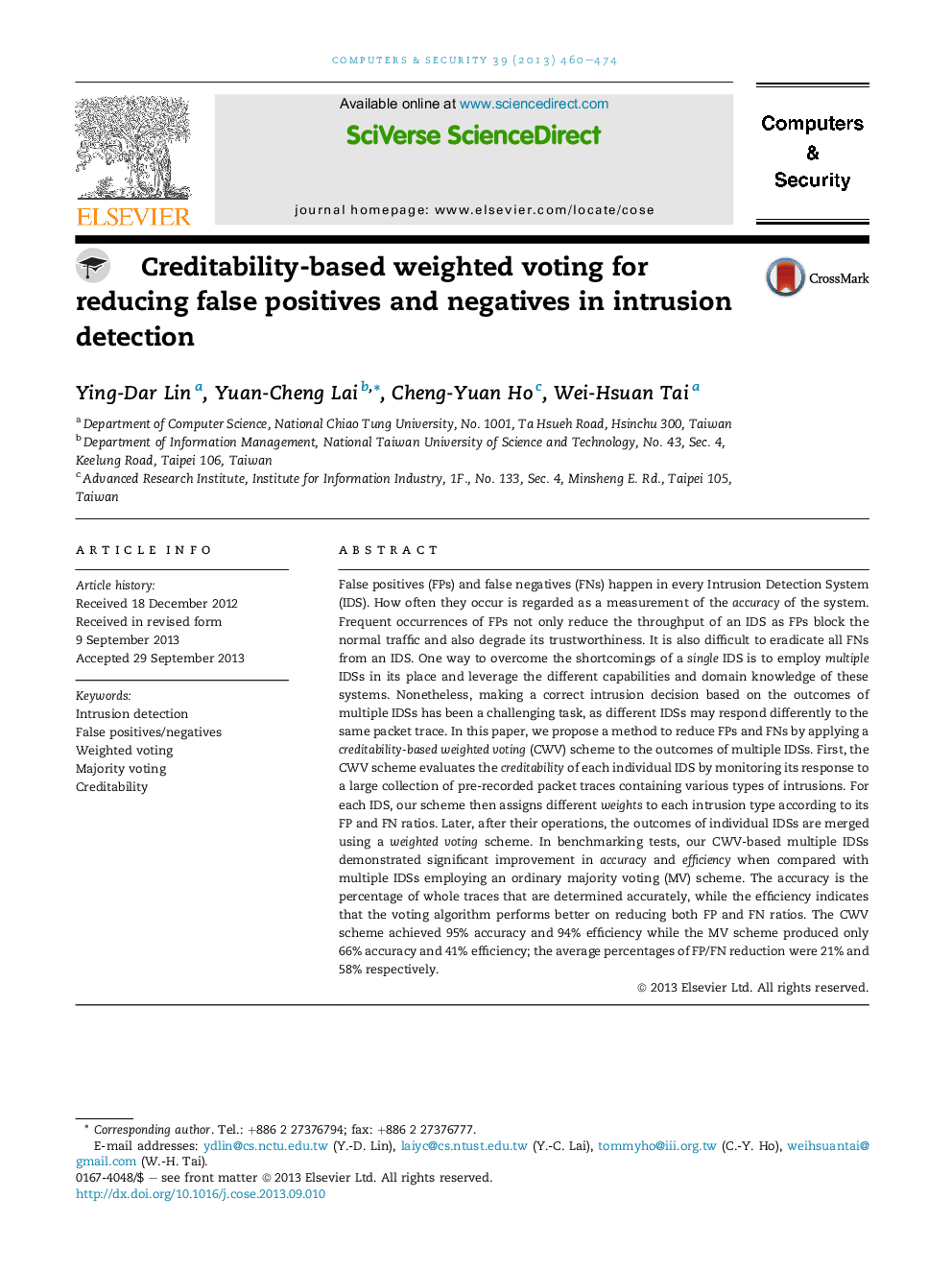| کد مقاله | کد نشریه | سال انتشار | مقاله انگلیسی | نسخه تمام متن |
|---|---|---|---|---|
| 454781 | 695289 | 2013 | 15 صفحه PDF | دانلود رایگان |

False positives (FPs) and false negatives (FNs) happen in every Intrusion Detection System (IDS). How often they occur is regarded as a measurement of the accuracy of the system. Frequent occurrences of FPs not only reduce the throughput of an IDS as FPs block the normal traffic and also degrade its trustworthiness. It is also difficult to eradicate all FNs from an IDS. One way to overcome the shortcomings of a single IDS is to employ multiple IDSs in its place and leverage the different capabilities and domain knowledge of these systems. Nonetheless, making a correct intrusion decision based on the outcomes of multiple IDSs has been a challenging task, as different IDSs may respond differently to the same packet trace. In this paper, we propose a method to reduce FPs and FNs by applying a creditability-based weighted voting (CWV) scheme to the outcomes of multiple IDSs. First, the CWV scheme evaluates the creditability of each individual IDS by monitoring its response to a large collection of pre-recorded packet traces containing various types of intrusions. For each IDS, our scheme then assigns different weights to each intrusion type according to its FP and FN ratios. Later, after their operations, the outcomes of individual IDSs are merged using a weighted voting scheme. In benchmarking tests, our CWV-based multiple IDSs demonstrated significant improvement in accuracy and efficiency when compared with multiple IDSs employing an ordinary majority voting (MV) scheme. The accuracy is the percentage of whole traces that are determined accurately, while the efficiency indicates that the voting algorithm performs better on reducing both FP and FN ratios. The CWV scheme achieved 95% accuracy and 94% efficiency while the MV scheme produced only 66% accuracy and 41% efficiency; the average percentages of FP/FN reduction were 21% and 58% respectively.
Journal: Computers & Security - Volume 39, Part B, November 2013, Pages 460–474